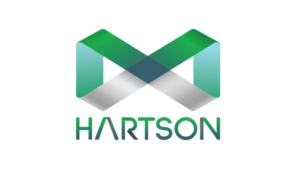Top 10 Cloud Security Terms You Need to Know
As cloud adoption accelerates, understanding key cloud security concepts is critical for protecting data, managing risks, and ensuring compliance. This guide breaks down the top 10 cloud security terms every professional should know, offering actionable insights and practical examples to solidify your knowledge.
1. Shared Responsibility Model
Definition
The shared responsibility model defines the division of security responsibilities between the cloud provider and the customer.
Why It’s Important
- Cloud providers secure the underlying infrastructure (hardware, storage, networking).
- Customers are responsible for securing their data, applications, and access controls.
Example
In Microsoft Azure, the platform ensures data center security, while the customer is responsible for configuring firewalls and managing user identities.
Pro Tip: Always clarify the shared responsibility model with your cloud provider to avoid security gaps.
2. Identity and Access Management (IAM)
Definition
IAM is a framework of policies and technologies used to ensure the right individuals access the right resources at the right times.
Why It’s Important
IAM reduces the risk of unauthorized access and enforces least privilege principles.
Example
Azure Active Directory (AAD) allows organizations to manage user permissions and enable multi-factor authentication (MFA).
Best Practice: Regularly review access controls and implement conditional access policies.
3. Zero Trust Security
Definition
Zero Trust assumes no user or device should be trusted by default, regardless of whether they are inside or outside the network perimeter.
Why It’s Important
This model prevents lateral movement in the event of a breach.
Example
Using Azure Security Center to enforce access policies that require device compliance and MFA before granting access to resources.
Implementation Tip: Start with identity and device verification, then expand to data and application controls.
4. Data Encryption
Definition
Encryption converts data into a coded format that can only be deciphered with a decryption key.
Why It’s Important
Encryption protects data at rest, in transit, and during processing from unauthorized access.
Example
Azure Key Vault secures encryption keys used to encrypt data stored in Azure Blob Storage.
Quick Tip: Always use TLS for data in transit and ensure encryption at rest is enabled for all cloud resources.
5. Cloud Security Posture Management (CSPM)
Definition
CSPM tools identify and remediate misconfigurations and compliance violations in cloud environments.
Why It’s Important
Misconfigurations are a leading cause of cloud breaches.
Example
Azure Security Center provides CSPM capabilities, including compliance checks and security recommendations.
Best Practice: Automate remediation where possible to reduce manual errors.
6. Security Information and Event Management (SIEM)
Definition
SIEM systems collect, analyze, and respond to security events across an organization’s infrastructure.
Why It’s Important
SIEM provides centralized visibility into security incidents and supports threat detection and response.
Example
Microsoft Sentinel is a cloud-native SIEM that aggregates logs and uses AI for threat detection.
Pro Tip: Integrate all cloud platforms into your SIEM to ensure comprehensive monitoring.
7. Multi-Factor Authentication (MFA)
Definition
MFA requires users to verify their identity using two or more authentication factors.
Why It’s Important
MFA adds an additional layer of protection against compromised credentials.
Example
Azure Active Directory supports MFA using mobile apps, text messages, or biometrics.
Best Practice: Make MFA mandatory for all privileged accounts.
8. Endpoint Detection and Response (EDR)
Definition
EDR tools monitor and detect threats on endpoints, such as laptops, servers, and virtual machines.
Why It’s Important
Endpoints are common targets for attackers, and EDR enhances visibility into endpoint activity.
Example
Microsoft Defender for Endpoint provides advanced threat detection and automated response capabilities.
Implementation Tip: Integrate EDR with SIEM solutions like Sentinel for end-to-end monitoring.
9. Compliance Automation
Definition
Compliance automation uses tools to continuously monitor and enforce regulatory requirements across cloud environments.
Why It’s Important
Manual compliance checks are time-consuming and prone to error.
Example
Azure Policy allows organizations to automate compliance with frameworks like GDPR and HIPAA.
Quick Tip: Regularly review compliance reports to ensure ongoing adherence to standards.
10. Security Orchestration, Automation, and Response (SOAR)
Definition
SOAR solutions automate security workflows and improve incident response efficiency.
Why It’s Important
SOAR reduces response times and helps security teams focus on high-priority tasks.
Example
Microsoft Sentinel playbooks use Azure Logic Apps to automate actions like blocking suspicious IPs.
Best Practice: Customize SOAR workflows to align with your organization’s security policies.
Conclusion
Understanding these cloud security terms is essential for building a strong security posture in today’s complex multi-cloud environments. By familiarizing yourself with these concepts and implementing best practices, you can enhance your organization’s ability to prevent, detect, and respond to threats effectively.
Next Steps
- Assess your current understanding of these terms and their application in your environment.
- Identify gaps in your security strategy and prioritize areas for improvement.
- Leverage tools like Azure Security Center and Microsoft Sentinel to operationalize these concepts.
Looking to keep your browsing secure? I recommend PIA VPN for top-notch encryption and privacy protection.
Get it here and secure your online activity today.
Boost Your Website Performance with Hostinger’s Cloud Hosting!




Leave a Reply
Want to join the discussion?Feel free to contribute!